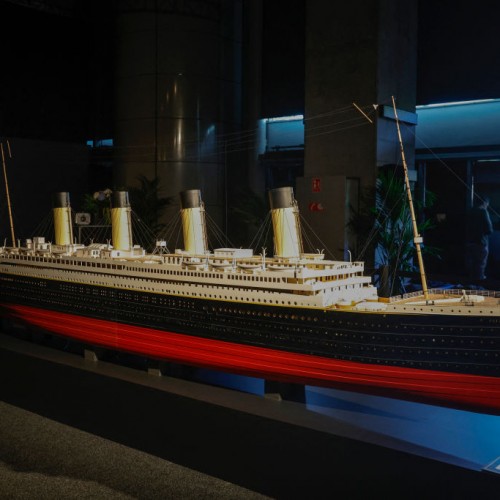James Cameron Reveals Big ‘Titanic’ Movie Secret: ‘Only Cast Short Extras To Make Set Look Bigger’
James Cameron has revealed a unique approach taken during the production of "Titanic" to create the illusion of a grandiose set.
With a staggering budget of $200 million for the 1997 blockbuster, Cameron and his team had to employ inventive techniques to capture the vast scale of the doomed ocean liner without overspending.
In an interview with the Los Angeles Times for the film's 4K remastering home video release, the director disclosed that one cost-saving measure involved casting shorter extras to make the sets appear more expansive.
"We only cast short extras, so it made our set look bigger. Anybody above five foot eight, we didn't cast them. It's like we got an extra million dollars of value out of casting," explained Cameron.
This strategic casting decision was one of several tricks employed to control costs.
The film featured a core team of approximately 150 extras, each with names and detailed backstories mirroring the real-life experiences of Titanic passengers in 1912.
The production used a replica ship that was 15% smaller than the actual Titanic, set in a massive outdoor water tank in Mexico.
The hull and chimney stacks were adjusted for proportion, and specific set plans were altered or discarded to avoid unnecessary expenses.
Producer Jon Landau noted that abandoning a set with a three-degree tilt saved around $750,000.
"The scale of everything was beyond anything we could imagine in terms of our prior experience," Cameron told L.A. Times.
"At the time, we thought, wow, there's no way this movie could ever make its money back. It's just impossible. Well, guess what?" he added.
Despite initial concerns about the film's profitability, "Titanic" became a global sensation, earning $1.8 billion at the box office during its initial run and winning 11 Oscars at the 1998 Academy Awards.
Cameron, who had to allay the fears of Fox production executives during filming, previously considered building a functioning ocean liner in a Polish shipyard for the movie.
However, the idea was scrapped due to the impracticality of sinking a real ship for just one take.
The director's commitment to historical accuracy extended to the details of the set, with china and silverware bearing the White Star Line insignia, the company that operated the Titanic.
Reflecting on the success of the film, Cameron highlighted the decision to film the sinking scene last.
"The smartest thing we did was do the sinking last. It wasn't because of strategy -- it was simply because you sink the set last because otherwise, it doesn't look so good the next morning when you bring it back up," he explained.
James Cameron's net worth is estimated to be around $700 million, largely attributed to the massive success of his films like "Titanic" and "Avatar," which have consistently broken box office records. His financial success reflects not only his creative vision but also his ability to execute ambitious projects like "Titanic" within budget constraints while still delivering groundbreaking cinematic experiences. Cameron's keen eye for detail and commitment to authenticity have contributed to his reputation as one of the most influential filmmakers in the industry, cementing his place as a Hollywood icon.







